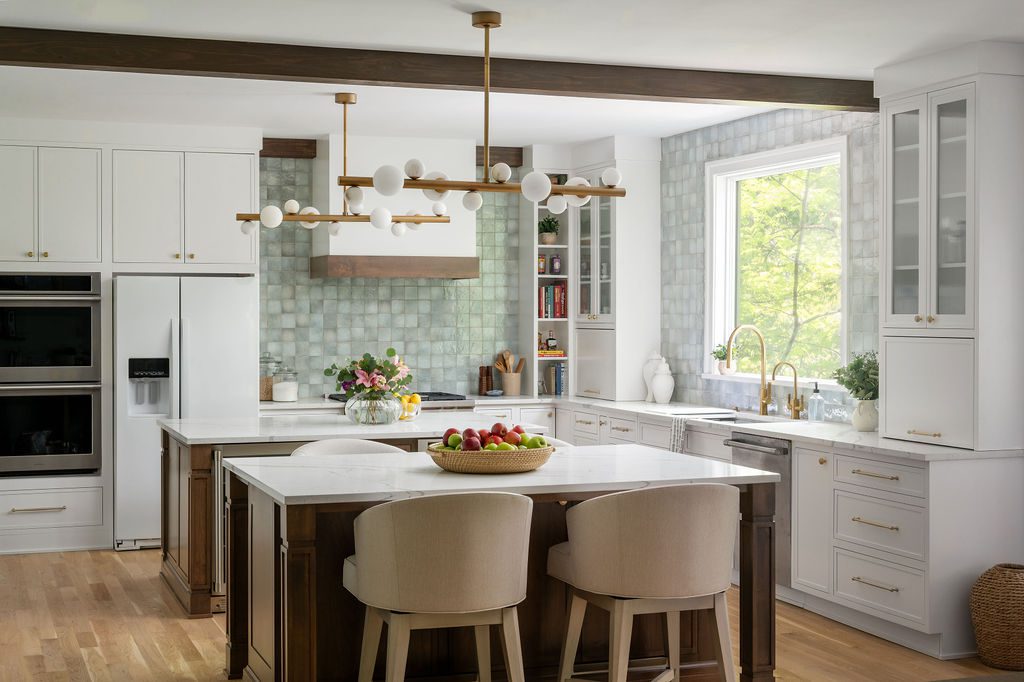Deciding to remodel your kitchen can be both exciting and a little stressful. Exciting because you are imagining all of the possibilities- a great work space, new appliances, an up to date color palette and a space for family to share a meal together. That sounds wonderful! But it can be stressful too. You need to plan to be without a kitchen for awhile, and there are lots of decisions to be made. And then the big one, it costs money. Remodeling a kitchen can be a significant investment in your home.
We wish we could tell you exactly how much remodeling your Kitchen will cost. We can’t. If you want to know more about Kitchen costing, check out our blog. While the exact number will vary project to project, we can offer some guidance on how to consider budgeting.
When developing a kitchen, we often tell clients there are 2 paths to follow:
– design and select exactly what you want and the project will cost what it costs
– start with a budget and work backwards- let budget guide the exact scope of work and material selections
As you can imagine, we usually end up somewhere in the middle of these two options. But lets play out the second path- how do we stick to a budget? When developing a project you have a few variables available to control cost: the design of the project, the exact scope of work, material selections and finally your involvement. Let’s explore each of these in more detail.
Design of the Project
Design issues and details can have a significant impact of the final cost of a project. An example might be as simple as choosing a range in lieu of a cooktop/ rangetop with separate wall ovens. A range is less expensive. Waterfall countertops edges look fantastic but add to the cost of a project. Shiplap siding and coffered ceilings are design details that make the space unique, but they add to cost. If you are looking to keep budget in check, you either need to incorporate these enhancements to your budget or proceed without them.
Scope of Work
It’s just a simple kitchen remodel- right? Well… maybe. Wouldn’t it be great to take down some walls? Or add a larger window? Scope creep is something to keep in control if you are keeping to a budget. Something as simple as removing a non-load bearing wall can add thousands of dollars to a project. Is there electrical in the wall that needs to be rerouted? Any ductwork? What about flooring? If it is wood and needs to be patched it may lead to refinishing floors on the entire first floor. There will never be a less expensive time to do these types of items than at the same time the kitchen is being remodeled, But, it does add to cost.
Material Selections
This is easy to comprehend but hard to practice. It looks fantastic! How much more can it be? A lot. There can be a huge difference in cost between two materials that look almost identical. This is true with cabinets, tile, countertops, sinks, faucets and appliances. If you are keeping to a budget put blinders on when you are making selections. Don’t even look at the things outside your price range or you will find something you just have to have.
Your Involvement
Time is money. The more time you invest in the project, the more you will save. This can be as extreme as designing and constructing the entire project yourself or something fairly simple like painting. Just be realistic about what you have the time and expertise to handle.
Now that we have an idea of what can be done to keep to a budget, let’s take a look at what the components of that budget might be. This chart outlines the percentages associated with major tasks involved in remodeling a “typical” kitchen.

Every project is different but this gives us an idea of the major expenses involved in remodeling a kitchen and their order of magnitude. You are not going to save much by focusing your attention on drywall work. In this example, plumbing materials/work, electrical materials/work, cabinetry, cabinet installation, countertops/ backsplash, and design/ project management all combine to represent 83% of the project cost not including appliances.
Finally, let’s put all of this information to use in a scenario:
You are ready to remodel the kitchen but you expect to be in the home another 3- 5 years so return on investment is a concern. This is critical information for whoever you are working with on your project. We would use it to counsel you to consider popular design options, “safe” material choices and neutral color palettes. We need to develop a project that is appealing not only to you but also to the broadest group of potential buyers in a few years. It is also wise to create a budget and stick to it.
The two biggest factors in projects going over budget are material selections and scope. You have significant control over both of these.






